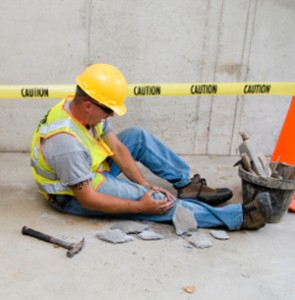Driving down Interstate 5 through the Pacific Northwest, you see a lot of logging trucks pass you by.
Loggers and truck drivers do a lot of heavy lifting and/or climbing, but so do other professions, like nurses, construction workers, doctors or even chefs who walk long distances while lifting items they may need on the job.
You may not think of these jobs as a place where a knee injury might occur, but in fact, occasionally injure a person.
A knee injury might not be apparent at first, but over time, may become swollen and painful. The knee injury now becomes an impediment, and you are unable to lift things because your stance is unstable.
Think about the last time you wobbled a little because your knee gave out and developed a nagging pain soon after. Did you do anything to alleviate the pain you felt in your knee?
Common Knee Injuries
Meniscus Injuries: Meniscus tears can cause intense pain and instability in the knee depending on the severity of the tear. Clients with tears to the meniscus describe a sensation of their knee “giving out” or “coming out from under them” while walking or climbing stairs.
The knee will most likely swell in order to protect itself, which can be intensely painful and can limit movement. Although physical therapy, anti-inflammatory medication and cortisone injections can help reduce symptoms, an orthopedic doctor will often recommend arthroscopic surgery to repair the tear.
Ligament Injuries: Injuries to the cruciate ligaments – such as the anterior cruciate ligament (ACL), medial collateral ligament (MCL) and posterior cruciate ligament (PCL) – are sometimes referred to as sprains, but they can be much more complicated than simple muscle strains. These injuries can require months of treatment to recover, and some cruciate ligament injuries — e.g., anterior cruciate ligament (ACL) tears – may require reconstructive surgery.
Chondromalacia: Chondromalacia is a disorder caused by softening of the articular cartilage of the kneecap. It can be caused by traumatic injury or overuse or repetitive motion on the job. Signs and symptoms of chondromalacia include dull, achy pain in the front of the knee, increased pain when walking up or down stairs, pain in the knee when kneeling or squatting, knee pain after sitting for long periods of time, a grating or grinding sensation when you extend your knee and knee stiffness.
To diagnose the problem, an OSS physician may require you to attempt simple knee exercises or recommend X-rays or other imaging tests such as an MRI or CT scan. Treatment options include rest, pain relievers or physical therapy. In rare cases, arthroscopic or realignment surgery may be options.
According to Dr. Watt, “Knee problems and injuries may be job-related or not. Sometimes it is obvious and sometimes not obvious and this may be part of the initial evaluation. I have extensive experience on all types of knee problems and injuries and would love to help anyone with a knee problem to try and regain a healthy knee.”
Dr. Watt is a board-certified orthopedic surgeon here at OSS who works with patients dealing with a wide range of orthopedic issues. Dr. Watt carefully weighs conservative and aggressive methods of treatment to devise a plan tailored to the specific needs of the individual. This personalized approach creates excellent outcomes, with patients working as close partners in the treatment process.


